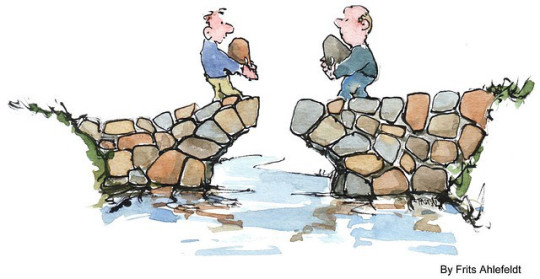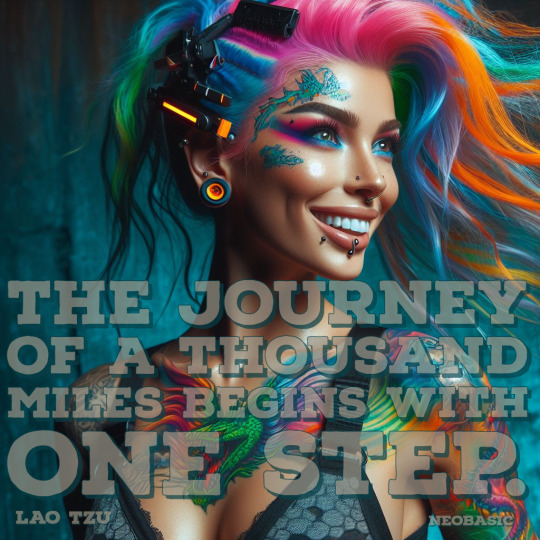#PhilosophyBlog
Explore tagged Tumblr posts
Text
Resistance to Change: Why Humans Struggle with the Unfamiliar

Imagine the skepticism surrounding early automobiles. Critics dubbed them noisy contraptions, dismissing them as impractical compared to the trusted horse and carriage. Fast forward to today, and cars are an indispensable part of life. This resistance to change is not new; it is deeply ingrained in human behavior. From groundbreaking technologies to societal shifts, humans instinctively resist the unfamiliar. But why? Understanding the roots of this resistance—from evolutionary instincts to psychological barriers—can help us embrace the unknown and evolve.
When was the last time you instinctively rejected a new idea or innovation? What made you hesitate?
Evolutionary Roots of Resistance
Humans are hardwired to prioritize safety and predictability. In early human history, the unfamiliar often equated to danger. A new environment could mean predators, poisonous plants, or other risks to survival. These instincts remain with us today, influencing how we react to change.
Moreover, our brains are designed for energy efficiency. Change requires cognitive effort—learning new behaviors, adapting to new norms, and reevaluating existing frameworks. This energy expenditure is something our brains prefer to avoid. Research from the Journal of Neuroscience suggests that the brain consumes up to 20% more glucose when learning new tasks compared to performing familiar ones. The result? An innate aversion to stepping into the unknown.
Psychological Barriers to Change
Resistance to change stems from psychological factors deeply rooted in how we perceive risk and reward. Consider these common scenarios:
Fear of Failure: When faced with the unknown, humans often overestimate the potential for failure. According to a study by the University of Pennsylvania, 73% of professionals report avoiding new challenges due to fear of failure. This manifests in everyday situations: declining a promotion that requires new skills, avoiding public speaking opportunities, or resisting new technology adoption in the workplace.
Loss Aversion: Behavioral economists have found that losses feel twice as impactful as equivalent gains. For instance, the prospect of losing $100 feels more significant than the possibility of gaining $100. This explains why employees might resist a new software system even when it promises increased efficiency—the perceived risk of losing familiarity with the current system outweighs potential benefits.
Comfort Zones: Familiar routines and habits provide a sense of control, even if they're no longer optimal. A 2019 workplace study revealed that 62% of employees would rather maintain inefficient processes than adapt to new ones. When was the last time you stuck with a familiar but inefficient routine simply because it felt comfortable?
Societal and Cultural Influences
Resistance to change is not just individual; it's reinforced by societal and cultural norms.
Group Dynamics: Societies thrive on shared norms and values, which often discourage deviation. Breaking away from these norms can lead to alienation, making resistance a safer choice. Consider these historical and contemporary examples:
Social Movements: The women's suffrage movement faced intense resistance not just from men, but from women who had internalized traditional gender roles. Today, similar dynamics play out in movements for racial equality, climate action, and social justice.
Cultural Shifts: The acceptance of remote work illustrates how societal resistance can transform. Pre-2020, many companies insisted that remote work would decrease productivity. Today, hybrid and remote work models are mainstream, demonstrating how quickly cultural resistance can dissolve when circumstances demand change.
Historical Examples: The printing press faced criticism and bans from authorities who feared it would disrupt societal order. The telephone was initially dismissed as a toy with no practical value. Each innovation challenged existing power structures and social norms before gaining acceptance.
Modern Parallels and Technological Evolution
Today's transformative technologies face similar patterns of resistance and gradual acceptance. Consider these examples:
Artificial Intelligence: Initially met with fear and skepticism, AI is now integrated into daily life through virtual assistants, recommendation systems, and automated services. Yet concerns about job displacement mirror historical fears about industrialization.
Cryptocurrency and Blockchain: Beyond Bitcoin, these technologies challenge traditional financial systems. While some dismiss them as volatile or complex, others recognize their potential to democratize finance, much like how the internet democratized information.
Electric Vehicles: Despite initial resistance due to range anxiety and higher costs, EVs are gaining acceptance as technology improves and climate concerns grow. This mirrors the transition from horses to automobiles a century ago.
Social Media: From being dismissed as a teenage fad to becoming a crucial communication platform, social media's evolution demonstrates how resistance can transform into dependence.
Strategies for Overcoming Resistance
Understanding resistance is the first step; overcoming it requires practical strategies:
Education and Exposure:
Start with "why": Explain the purpose and benefits of change
Provide hands-on experience in low-stakes environments
Share success stories and case studies
Create peer learning opportunities
Incremental Implementation:
Break big changes into smaller, manageable steps
Set achievable milestones
Celebrate small wins
Allow time for adjustment at each stage
Building Support Systems:
Create communities of early adopters
Establish mentorship programs
Provide resources and training
Maintain open feedback channels
Successful Change Management Examples:
Adobe's Transformation: When Adobe shifted from packaged software to cloud subscriptions, they focused on educating customers about benefits while maintaining support for legacy products during the transition.
Healthcare Digitization: Hospitals successfully implementing electronic health records focused on incremental adoption, extensive training, and peer support systems.
Conclusion
Resistance to change is a natural human response, rooted in evolution, psychology, and societal influence. However, understanding these barriers allows us to overcome them and embrace growth. As you encounter the unfamiliar, ask yourself:
What specific fears or concerns are driving my resistance?
What small steps could I take to explore this change?
Who could support me in this transition?
The world moves forward when we step beyond the familiar. As the great innovator Steve Jobs once said, "The people who are crazy enough to think they can change the world are the ones who do." Let's challenge ourselves to be open to the unfamiliar and unlock the potential it holds.
Remember: Every transformative innovation in history was once considered impossible, impractical, or unnecessary. What change will you embrace today?
Take Action Towards Financial Independence
If this article has sparked your interest in the transformative potential of Bitcoin, there's so much more to explore! Dive deeper into the world of financial independence and revolutionize your understanding of money by following my blog and subscribing to my YouTube channel.
🌐 Blog: Unplugged Financial Blog Stay updated with insightful articles, detailed analyses, and practical advice on navigating the evolving financial landscape. Learn about the history of money, the flaws in our current financial systems, and how Bitcoin can offer a path to a more secure and independent financial future.
📺 YouTube Channel: Unplugged Financial Subscribe to our YouTube channel for engaging video content that breaks down complex financial topics into easy-to-understand segments. From in-depth discussions on monetary policies to the latest trends in cryptocurrency, our videos will equip you with the knowledge you need to make informed financial decisions.
👍 Like, subscribe, and hit the notification bell to stay updated with our latest content. Whether you're a seasoned investor, a curious newcomer, or someone concerned about the future of your financial health, our community is here to support you on your journey to financial independence.
Support the Cause
If you enjoyed what you read and believe in the mission of spreading awareness about Bitcoin, I would greatly appreciate your support. Every little bit helps keep the content going and allows me to continue educating others about the future of finance.
Donate Bitcoin: bc1qpn98s4gtlvy686jne0sr8ccvfaxz646kk2tl8lu38zz4dvyyvflqgddylk
#ResistanceToChange#PhilosophyOfChange#HumanBehavior#AdaptationAndGrowth#OvercomingFear#PsychologyOfChange#EvolutionaryPsychology#ComfortZoneChallenges#TechnologicalInnovation#BitcoinPhilosophy#EmbraceTheUnfamiliar#PersonalGrowth#PhilosophyBlog#ThoughtLeadership#ChangeIsHard#bitcoin#financial empowerment#digitalcurrency#financial experts#blockchain#globaleconomy#finance#unplugged financial#financial education#cryptocurrency
2 notes
·
View notes
Text
#PhilosophyBlog#TimelessWisdom#PhilosophyForLife#SpiritualPhilosophy#AncientToModern#MediaEthics#Globalphilosophy
0 notes
Text
O životu, ljubavi i moći
Smisao Života: Putovanje Kroz Humanost, Ljubav i MoćU beskonačnom svemiru, gdje se zvijezde rađaju i umiru, čovjek traži smisao svog postojanja. Smisao života nije samo filozofsko pitanje, već duboka potraga koja nas vodi kroz labirinte humanosti, ljubavi, moći, milosrđa i povezanosti sa svim živim bićima.Humanost: Srce Našeg PostojanjaHumanost je temelj na kojem gradimo svoje društvo. Bez nje,…
#2024#ai#AIpictures#art#DeepThoughts#EnlightenedLiving#EternalQuestions#ExistentialWisdom#InnerPeace#LifeWisdom#mediacontent#MindfulLiving#NediljkoBBasić quote brainquote improvemindofaworld#PhilosophicalInsights#PhilosophicalJourney#PhilosophyBlog#post#ReflectiveThinking#WisdomQuotes#WisdomSeeker#WisdomWednesday#Confucie#Confucius#Life
0 notes
Text
Writing in sincerity, yours truly, best, Max
Last October, I decided I wanted to start an illustration project, so I did.
In July, I decided I wanted to self publish a punk zine, so I did.
Last month, I decided I wanted to start a music blog, so I did.
Restoring some DIY attitudes towards self-initiated projects has only enriched my life so far. During the pandemic, I felt so detached from reality and the outside world, and it basically shuttered my socialized world. The only good thing that came from it was a need to move my own projects forward, things I could rely on without external force.
Doing the illustration project allowed me to save enough money to move to the city, so I did. The past few months have been characterized by the frivolities of hot vax summer — going to a lot of shows, getting drunk, hooking up, etc. I felt good again, in touch with the world again. But I also felt a little chaotic and unhinged. I was not used to the pace of life I was running, not even before the pandemic. I consider myself sensitive to highly stimulating situations, sensitive to how I relate to people in changing social circumstances. I’ve taken some time away from the city, and gotten a bit more in touch with my contemplative side.
I’ve always been fascinated by questions in how people communicate with each other, especially in literature and illustration. Lately, however, I’ve been more interested in broader questions related to semantics, the philosophy of language, and theory of mind. During the past month away from the city, I’ve rediscovered my love for philosophy as well. In particular, I’ve been fascinated by the writing of Kierkegaard, Weil, and William James, all of whom were fascinated by the nature of attention and language.
I’m hoping this blog can be a place where I unashamedly explore my interests and questions in linguistics, religion, philosophy, theory of mind, and art. Not being an expert in something has never stopped me from digging in and getting curious. In the spirit of a courageously interested blogger like Maria Popova, I want to document more thoughts here.
2 notes
·
View notes
Text

hey guys!
So, this is a test for me. I have been wanting to keep updated my studyblr for two years and never did it. Now i’ts my new chance. I wanna make it as a commitment to myself, If I do it I’ll know I can put my mind into something like this and actually accomplish it.
Can you help me find studyblrs and langblrs to follow that will keep me inspired and in shape?
Also, I’m interested for history, sociology, philosophy, communication, literature, feminism, veganism, french and latin languages, celtic culture, journaling... well, a lot of things actually. But if you are post often, I will follow you!
And I hope we can be productive together!
Thanks!
Xoxo
#studying#studyblr#newstudyblr#langblr#studies#studydesk#college studyblr#french studyblr#latin#woman studies#new langblr#sociologyblog#philosophyblog#historyblog#socialstudies#student#studymotivation#studymorning#studytime#study notes#study inspiration#study aesthetic#studyspo#bullet journal#journaling#bujo
18 notes
·
View notes
Text
Nietzschean Gratitude
I agree that Nietzschean philosophy is notoriously over-simplified and is often fed in bite-size pieces. Honestly, the malleability of his writing is both beautiful and ugly at the same time. It is unfair, and problematic, to reduce a mind like Nietzsche’s down to a few quotes and I shall refrain from doing that.
Speaking of Gratitude, Nietzsche says, gratitude is a form of revenge. Revenge here does not imply to hurt or harm, it is instead a reaction to someone doing something to/for you.
Essentially meaning, if you do not show gratitude you are not powerful (psychologically), or that you are less powerful than the other person. Think of it as a milder form of revenge.
Additionally, A powerful man will always show gratitude but will never be obliged. To feel obliged is to feel bound, and a powerful man is competent enough to
know that he does not need to please the other person, or to grovel in front of the other person. Gratitude shows self-respect. If someone intrudes into your sphere and does a good or a bad thing, you will show gratitude and intrude their sphere in return.
#nietzsche#nietzschean philosophy#gratitude#philosophy#philosophyblog#newblog#firstpost#tumblr blog#power#revenge#selfrespect#personalblog#personal blog#nowreading#now reading#quotes#books#writing#writers#philosophers#german philosopher
0 notes
Text
The Illusion of Time Explained
In order to comprehend why physicist assume that time is an illusion, we first need to understand what time is and how we perceive it.
How we perceive time
Time is a fascinating concept, but even more fascinating is the idea of time perception and time dilation. Physicists supposedly proved that time isn’t linear, what we call past, present and future are happening at the same moment, yet we perceive it differently.
What is Time Dilation
Before Einstein’s theory of relativity, we thought time was linear, meaning that every interval is the same as others, a year for you is a year for me, and so on. But then came time dilation and everything changed. In October 1971, the Hafele-Keating experiment took four synchronized atomic clocks aboard commercial planes and flew around the world, twice. The clocks then proceeded to be compared against others that remained at the US Naval Observatory; the result was consistent with special and general relativity.
To put it simply, say you place an atomic clock in the ground, and you take another aboard an F-22 Raptor (one of the fastest fighting jets at the moment) then proceed to take a flight. When the Jet comes back after 6 minutes, the pilots would’ve only experienced 3 minutes (if they were moving twice as fast as you were, of course).
Speed affects time, the concept of space-time means that both are intertwined, so, if you move in space, you move in time and vice versa. If you stay still in the same place, you’re not moving in space or time, except for the Earths movement, which makes you move as fast as it does, but if you add enough speed to that movement, you could double the passing of time (which would be considered time travel to the future), so yes, time travel is possible!
When you travel from one place to another, in a car, at speed relatively faster than others, then you’re time traveling. The astronauts who spend one year at the International Space Station arrive some milliseconds younger. Take US Astronaut Scott Kelly who spent 11 months aboard the ISS and returned 13 milliseconds younger than his twin.
The same way if you board a plane from Texas to New York, you will arrive in the future, since the plane was moving a lot faster, relative to the speed of others on the ground.
But what about time going faster or slower?
It turns out that we can experience time slower than it is actually passing for everyone else. Imagine a Bengal tiger is chasing you, suddenly time slows down, seconds could seem to become minutes, this is nothing more than a response to a threat. When your heart rate goes up, and adrenaline fills your blood system, your perspective changes, muscles become tenser, your senses sharpen, you think time is slowing down, but in reality, YOU are going faster, you think and move faster, become more alert and notice small details. Since it is necessary to respond to a threat in the best possible way, it gives you a chance to think and react before the threat does.
But time can also seem to go really fast. If you’re having a nice time, you become more relaxed, your body gets filled with oxytocin, serotonin, dopamine, and other hormones that make your muscles and whole body relax, you become less alert and aware of your surroundings since it is not necessary because you’re in a safe environment or at least that’s how your brain perceives it.
Original Source
1 note
·
View note
Photo


(via A little give, A little take!!)
A little give, A little take!! - two cogs required to be in absolute sync for healthy relations.
0 notes
Photo

#mountains #blueskies #water #ocean #clouds #philosophyblog #peace #serenity #enlightenment #happiness #love #connection
#mountains#enlightenment#clouds#peace#philosophyblog#water#connection#serenity#blueskies#love#ocean#happiness
1 note
·
View note
Text
Tajna zajedništva
Ako nemamo mira, to je zato što smo zaboravili kako pripadamo jedni drugima. Majka Tereza If We Have No Peace, It Is Because We Have Forgotten That We Belong to Each OtherMother Teresa, known for her immense love and dedication to serving the poor, once said, “If we have no peace, it is because we have forgotten that we belong to each other.” This simple yet profound thought holds the key to…

View On WordPress
#2024#ai#AIpictures#art#EnlightenedLiving#EternalQuestions#ExistentialWisdom#InnerPeace#knowledge#LifeWisdom#mcv#MindfulLiving#new#PhilosophicalInsights#PhilosophicalJourney#PhilosophyBlog#post#quote#ReflectiveThinking#socialmediacontent#SpiritualGrowth#WisdomMonday#WisdomQuotes#WisdomSeeker#WisdomWednesday#Life#wise words
0 notes
Text
Enlightenment on the Path: Embarking on the Metaphorical Thousand-Mile Journey
In the steel silence of the night, as we sit under the cloak of starry stillness, we reflect on the meaning of the words: “And the journey of a thousand miles begins with a single step.” In this universe of symbols and deep philosophy, this sentence becomes our mantra, our torch, our map through the labyrinth of our understanding. The step, so simple, so fundamental, yet often underestimated in…

View On WordPress
#2024#ai#AIpictures#art#concetration#DeepThoughts#dtp#EnlightenedLiving#EternalQuestions#ExistentialWisdom#freelance#graphicdesigner#InnerPeace#knowledge#LifeWisdom#mcv#mediacontent#MindfulLiving#PhilosophicalInsights#PhilosophicalJourney#PhilosophyBlog#post#qotes#quote#quote goods#ReflectiveThinking#socialmedia#socialmediacontent#SpiritualGrowth#WisdomMonday
1 note
·
View note
Text
Rage of a dragon heart. 🐉 Embracing the Tao with Symbol Dragon and 🧠 the Supreme Intelligence
In the realm of Taoism, two celestial beings reign supreme: Symbol Dragon and the Supreme Intelligence, embodying the harmonious balance of yin and yang, essence and emptiness.🐉 Symbol Dragon: With scales reflecting the ebb and flow of the Tao, Symbol Dragon embodies the essence of Wu Wei, the art of effortless action. It dances through the ever-changing currents of existence, revealing the…

View On WordPress
#2024#AIpictures#art#DeepThoughts#EnlightenedLiving#EternalQuestions#ExistentialWisdom#graphicdesigner#InnerPeace#knowledge#LifeWisdom#mediacontent#MindfulLiving#nediljkobbasic#new#novo#PhilosophicalInsights#PhilosophicalJourney#PhilosophyBlog#post#ReflectiveThinking#socialmedia#socialmediacontent#SpiritualGrowth#WisdomSeeker#wisewords#Life
0 notes
Text
The Essence of Success: Overcoming Obstacles
In the pursuit of success, we often find ourselves fixated on the destination, measuring our achievements by the positions we hold in society, the wealth we accumulate, or the accolades we receive. Yet, as Ralph Waldo Emerson astutely noted, true success is not solely determined by these external markers, but rather by the challenges we surmount along the way. In this philosophical exploration,…

View On WordPress
#DeepThoughts#EnlightenedLiving#EternalQuestions#ExistentialWisdom#InnerPeace#LifeWisdom#MindfulLiving#nediljkobbasic#PhilosophicalInsights#PhilosophicalJourney#PhilosophyBlog#ReflectiveThinking#SpiritualGrowth#WisdomMonday#WisdomQuotes#WisdomSeeker
0 notes